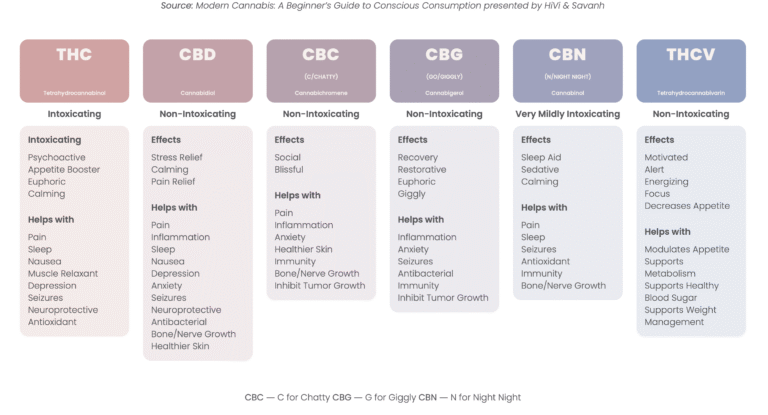
Understanding Strain Types: Indica, Sativa, Hybrid, And Why It’s Not That Simple
When most people start their cannabis journey, they’re introduced to three basic types: indica, sativa, and hybrid. These categories have long served as a guide for what to expect, indicas for relaxation, sativas for energy, and hybrids for balance. But if you’ve ever tried a strain labeled “sativa” that left you couch-locked, you know those labels don’t always tell the whole story.
At Alta, we believe it’s time to go deeper.
Strain types provide a general framework, but they don’t tell the full story. In reality, how a strain affects you depends more on its chemical profile, which includes cannabinoids, terpenes, and their interaction with your body’s endocannabinoid system.
Whether you’re shopping for better sleep, sharper focus, or a lighter mood, understanding what’s inside the flower can help you get the experience you’re really after.
Indica, Sativa, or Hybrid?
These three classifications have been the traditional way of understanding the possible effects of a cannabis strain for centuries. But what do they really mean?

What is Indica?
The name indica originates from an 18th-century classification by French biologist Jean-Baptiste Lamarck, who encountered this unique variety in India and recognized it as distinct from the more commonly known Cannabis sativa. He named it Cannabis indica, meaning “cannabis from India.”
Indica strains are typically short, stout, and bushier in appearance than their sativa counterparts, with broad leaves in a range of colors from deep green to rich purples.
Indica Effects
Indica strains are commonly associated with relaxation and a “body high,” but this generalization doesn’t hold true for all indica varieties. Each strain’s specific cannabinoid and terpene profile ultimately determines the experience.
Users often report the following effects from indica strains:
- Deep relaxation
- Pain relief
- Enhanced sleep quality
- A calming body high
Many people find indica-dominant strains to be deeply relaxing and soothing, often choosing to use them before bedtime. However, these effects can vary widely, not just between different strains, but also from person to person. The same strain may produce different effects depending on the individual.
Common Indica/Indica Dominant Strains
Looking to explore classic indica effects? These strains are frequently found on dispensary menus and remain favorites for their deeply relaxing properties:
Granddaddy Purple, OG Kush, Northern Lights, Gelato, Wedding Cake, Afghan Kush, Apple Fritter, Girl Scout Cookies, Ice Cream Cake
What is Sativa?
Sativa plants are tall and slender, with narrow, light green leaves. They originate from equatorial regions such as Central and South America and Southeast Asia. Many people choose sativa strains for their uplifting effects, often using them to feel more alert and mentally clear.
Sativa Effects
Sativa strains are commonly linked to stimulating, mood-enhancing effects. Often described as energizing and uplifting, sativa-dominant varieties may help improve focus, spark creativity, and boost productivity.
While effects can vary based on the specific strain, terpene content, and your own biology, many users describe sativa strains as delivering:
- Increased energy
- Enhanced creativity
- Feelings of euphoria
- Improved productivity
- A cerebral, head-focused high
Common Sativa/Sativa Dominant Strains
If you’re looking to explore bright, focused, or energizing cannabis effects, these sativa-forward strains are a great place to start:
Sour Diesel, Jack Herer, Blue Dream, Super Lemon Haze, Super Silver Haze, Durban Poison, Green Crack, Runtz, Gas Face
Common Misconceptions About Indica vs. Sativa:
- Sativa strains always make you laugh
- Sativa is always uplifting
- All indica strains are sedative and relaxing
- The effects of a strain are determined solely by whether it’s indica or sativa
- THC and CBD are the only compounds found in cannabis
- Strains labeled “sativa” are genetically pure sativa
- Strains labeled “indica” are genetically pure indica
- Indica contains only CBD, and sativa only THC
- Indica always makes you sleepy
In reality, a strain’s effects depend on a variety of factors, including its full cannabinoid and terpene profile, how the product is consumed, your dose, and your own body’s unique response.

What is a Hybrid?
Hybrid strains are the result of crossbreeding indica and sativa genetics over many generations. Today, there are thousands of hybrid strains and cultivars, each with distinct characteristics, often created by combining multiple cannabis cultivars and phenotypes through selective breeding.
Hybrids are also where we see some of the most creative and flavorful terpene profiles, offering an exciting middle ground for both new and experienced users.
Hybrid Effects
Since hybrids contain both sativa and indica genetics, their effects can vary widely. To get a better idea of how a specific hybrid might affect you, it’s helpful to look at its “parent” strains and their individual characteristics.
Common Hybrid Strains
Blue Dream, Gelato, Sour Diesel, Gorilla Glue, Wedding Cake, White Widow, Apple Fritter, Girl Scout Cookies, Pineapple Express, Super Lemon Haze, and Ice Cream Cake
While it’s helpful to start with indica, sativa, and hybrid as guideposts, cannabis today is best understood by chemistry, not category. Strain names, lineage, and even effects are helpful clues, but nothing beats knowing your own body.
Minor Cannabinoids and Their Effects
As you explore different strain types, understanding the role of minor cannabinoids can help you fine-tune your experience even further. Cannabinoids are compounds found in plants that interact with your Endocannabinoid System to create various effects.
The interaction of these different Cannabinoids creates an entourage effect. The entourage effect is the theory that the full spectrum of the cannabis plant works best together: the interaction between all of the compounds from a cannabis plant, such as phytocannabinoids and terpenes, comes together to potentially enhance their effects on your body.

The Big Two: THC and CBD
These days, many people are familiar with THC and CBD. THC (tetrahydrocannabinol) is the compound responsible for the “high” most people associate with cannabis. It can induce euphoria, altered perception, and increased appetite. CBD (cannabidiol), in contrast, is non-intoxicating and is known for its calming and anti-inflammatory properties.
But beyond THC and CBD lies a rich universe of minor cannabinoids, compounds that may not be as well known but can significantly influence your experience. These compounds interact with your body’s endocannabinoid system to modulate mood, pain, focus, appetite, and more.
Minor Cannabinoids, Major Impact
Here are some of the key minor cannabinoids found in the strains we sell, and what research suggests about their effects:
CBG: The Focus Enhancer
Known as the “mother cannabinoid,” CBG (cannabigerol) is the precursor from which other cannabinoids develop. While typically present in lower concentrations, its presence can enhance mental clarity, reduce inflammation, and support gut health. Strains with higher CBG content tend to feel bright and clear without being overly stimulating, making them ideal for daytime use when you want to stay focused and level.
CBN: The Sleep Companion
CBN (cannabinol) is often associated with deeply relaxing, sedative effects. It’s formed as THC ages and degrades, which is why late-season flower or specially cured products may have higher CBN levels. If you’re struggling with restlessness or looking for a gentle wind-down, CBN-forward products can promote a heavier body feel and a smoother transition to sleep.
THCV: The Clean Energy Spark
THCV (tetrahydrocannabivarin) behaves a bit differently than THC. In low doses, it may actually suppress appetite, offer clean mental energy, and support metabolic function. Some consumers report a light, buzzy mental clarity with very little fog or fatigue. THCV is often found in select sativa-leaning strains and is a great fit for people who want daytime elevation without the distraction of a strong high.
CBC: The Mood Booster in the Background
CBC (cannabichromene) is a subtle but supportive presence in many full-spectrum strains. It may contribute to anti-inflammatory and antidepressant-like effects and often works behind the scenes to amplify the benefits of THC and CBD. You may not feel CBC directly, but you’ll likely appreciate what it adds to the overall experience.

How to Shop by Effect, Not Just Strain Name
Rather than chasing the highest THC percentage (which doesn’t always correlate with quality), we encourage you to explore based on how you want to feel. Are you looking to feel creative and talkative for a social night out? Grounded and calm for an evening wind-down? Energized but clear for a productive afternoon?
Each strain has its own fingerprint, and we help decode it. In-store and online, our team can guide you by:
- Mood and intended outcome
- Time of day recommendations
- Cannabinoid and terpene breakdowns
- User experience and feedback
Strain Types Are Evolving, And So Should Your Experience
Cannabis isn’t one-size-fits-all. At Alta, we’re here to help you explore cannabis beyond what’s popular; we curate products based on how they actually make you feel.
Think of us as your cannabis sommelier, bringing together the best expressions of flavor, effect, and consistency across trusted brands and cultivators. And if you’re not sure where to start, we’ll walk you through the process so that you can choose by desired effect, not just strain name.
Whether you’re new to flower or know your way around a terp chart, our approach combines science, quality, and curation to bring you cannabis that works.





